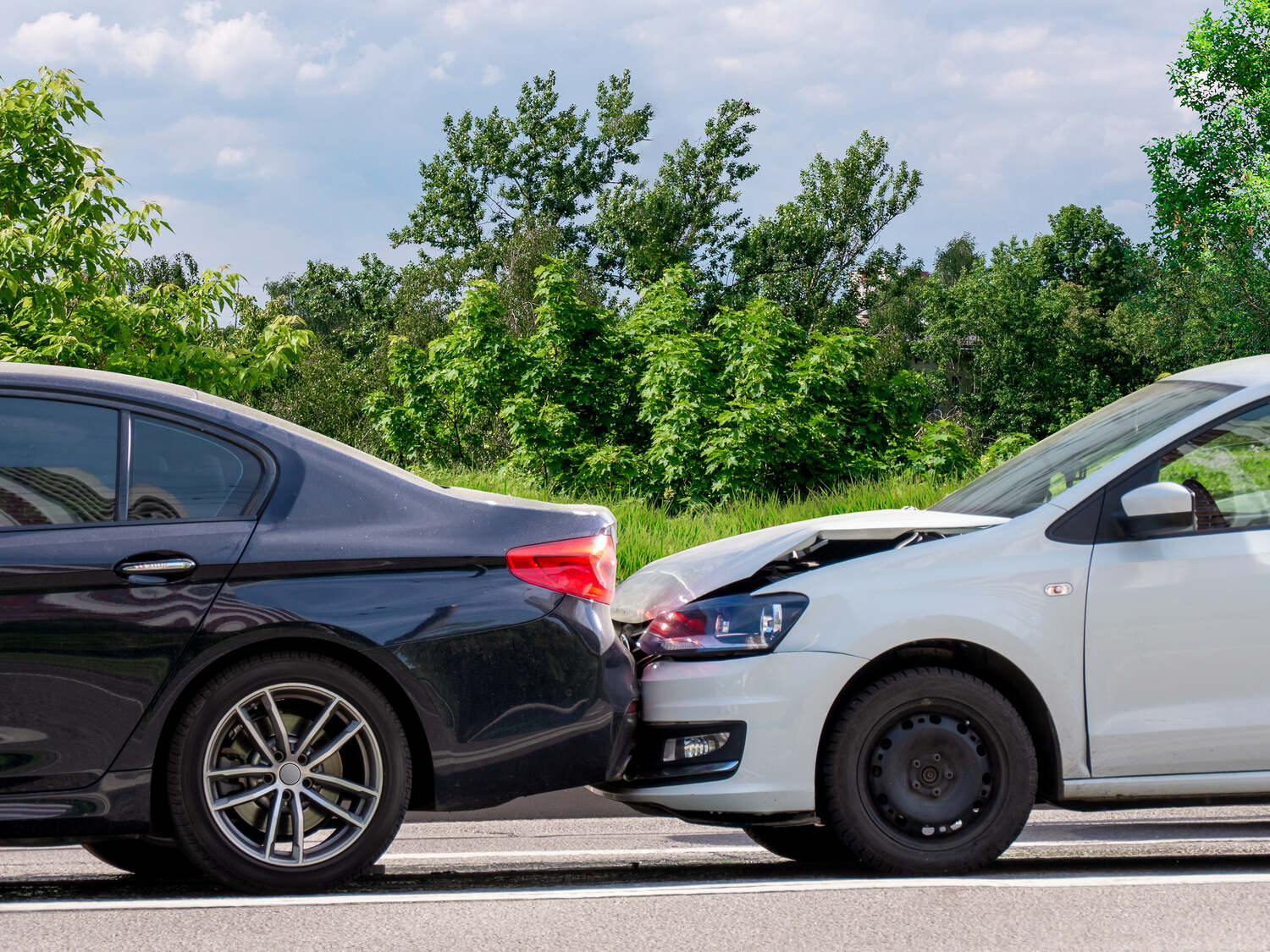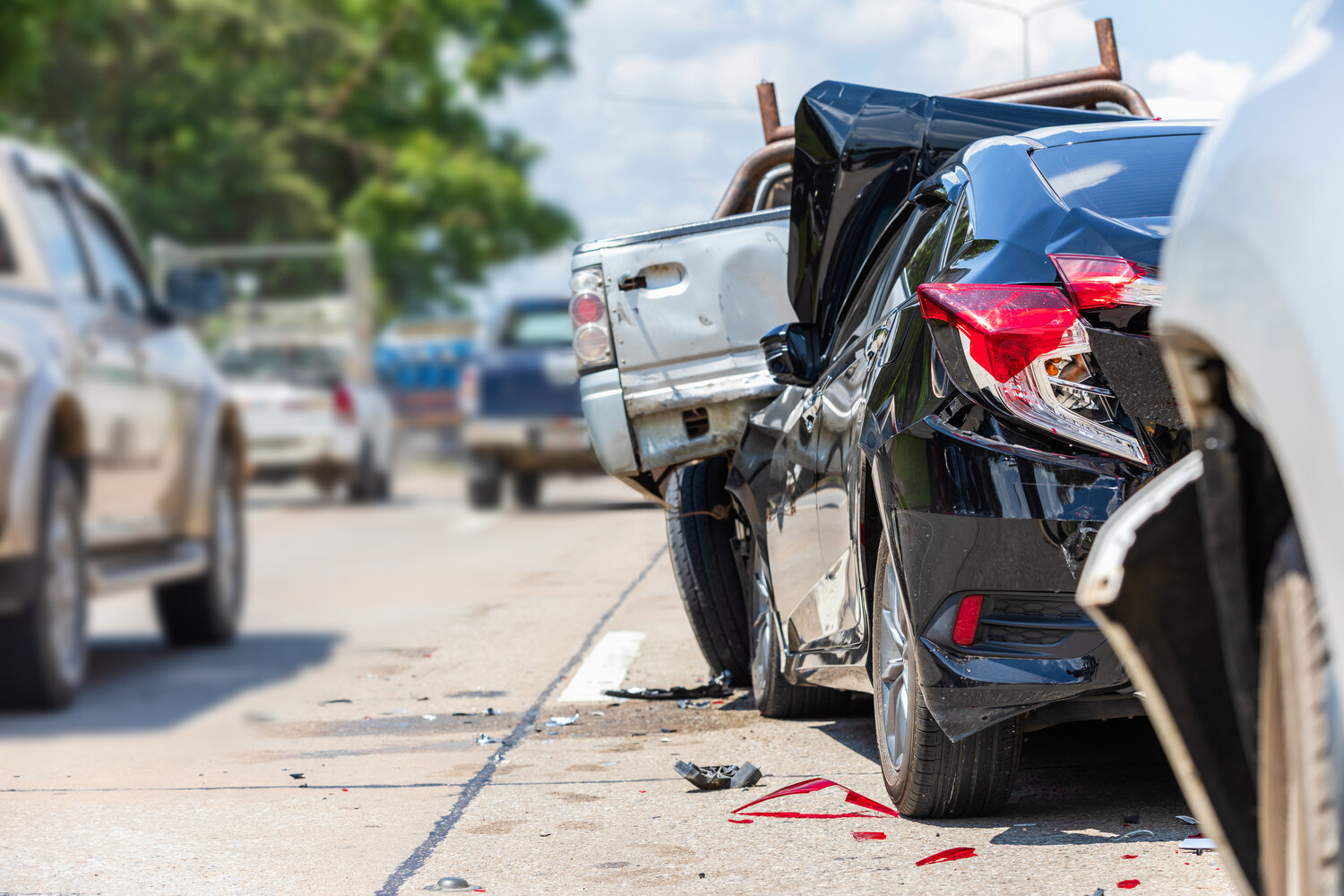RECENT POSTS
Categories
How to Prove Fault in a Car Accident [What You Need to Know]
If you were injured in a car accident, one of the most important steps to securing compensation for your damages is establishing who was at fault. While this looks a little different in every state, it is a critical process, especially when injuries or significant property damage are involved. Fault determines liability, which then influences how insurance companies handle claims and whether you can pursue a lawsuit with the help of an experienced team of car accident lawyers.
What Does “Fault” Mean In A Car Accident Claim?
In the context of a car accident, fault refers to the party or parties responsible for causing the collision. Determining fault involves considering various factors, such as the actions of each driver, adherence to traffic laws, and conditions at the time of the crash. Fault can range from one driver being entirely responsible to a situation where multiple parties share responsibility for the accident.
It’s important to note that fault is not only about driver error. In some cases, faulty road conditions or vehicle malfunctions (e.g., a blown tire or brake failure) can also contribute to the cause of the crash, making the determination of fault more complex.
The Legal Basis for Determining Fault
In the legal sense, fault in a car accident is based on negligence—meaning that one or more drivers did not act with the reasonable care expected of them while operating a vehicle. Whether through reckless driving, distracted driving, speeding, or failing to yield, negligence plays a central role in establishing fault. Insurance companies, courts, and law enforcement all rely on this principle when determining who is liable for damages and injuries resulting from a crash.
Why Proving Fault is Essential to Your Case
Proving fault is essential because it directly impacts your ability to recover damages. If you are not at fault, you may be entitled to compensation for medical expenses, lost wages, property damage, and pain and suffering. Conversely, if you are found at fault, it could significantly reduce your chances of receiving compensation, or you may be required to pay for damages to others.
In some states, like Alabama, even being partially at fault can result in the loss of your ability to recover compensation. This highlights how important it is to establish fault early on in the claims process.

Types of Evidence That Can Help Prove Fault
To prove fault in a car accident (even in minor car accidents), gathering evidence is key. The more reliable and comprehensive the evidence, the stronger your case will be. Here are some types of evidence that can help establish who was at fault:
Eyewitness Testimony
Eyewitness testimony is one of the most valuable types of evidence. If there were other people who saw the accident occur, their statements can provide crucial insight into what happened. Eyewitnesses can verify details like the behavior of the drivers involved, the conditions of the road, and whether any traffic laws were violated. In many cases, multiple witness accounts can strengthen your position, especially if they corroborate your version of events.
Dashcam and CCTV Footage
Eyewitness testimony is one of the most valuable types of evidence. If there were other people who saw the accident occur, their statements can provide crucial insight into what happened. Eyewitnesses can verify details like the behavior of the drivers involved, the conditions of the road, and whether any traffic laws were violated. In many cases, multiple witness accounts can strengthen your position, especially if they corroborate your version of events.
Vehicle Damage Analysis
The extent and location of vehicle damage can offer insight into how the accident occurred. For instance, rear-end collisions typically show damage to the front of the striking vehicle, while side-impact accidents show damage to the side of one or both vehicles. A forensic analysis of the vehicle damage can help reconstruct the events of the accident and point to the driver who is most likely at fault. In many cases, accident reconstructionists may be needed to interpret this evidence and determine factors like speed, impact angle, and vehicle position at the time of the collision.
Traffic Camera and Road Conditions Data
In many urban areas, traffic cameras monitor intersections, allowing for real-time footage of car accidents. These cameras can provide a clear visual record of the accident, including the actions of both drivers before and after the collision. Additionally, road conditions—such as wet pavement, construction zones, or poorly marked intersections—can contribute to accidents and may factor into fault determination.
Common Challenges in Proving Fault
While gathering evidence is essential, proving fault is not always straightforward. Several challenges can arise, particularly when there is a dispute about the details of the crash or when multiple parties share liability.
When Fault Is Shared Between Drivers
In some cases, fault may be shared between two or more drivers. For example, one driver might have run a red light, but the other driver might have been speeding, which exacerbated the collision. In these cases, comparative negligence laws determine how much each driver is responsible for the accident and how much compensation can be recovered.
States handle shared fault differently, with some using pure comparative negligence (allowing recovery no matter the degree of fault) and others using modified comparative negligence (where recovery is limited if a driver is more than 50% at fault).
Disputes Over Evidence
Sometimes, evidence is conflicting or inconclusive, making it difficult to determine fault. For instance, one driver may argue that a witness misinterpreted the events, or dashcam footage may be unclear. In these situations, your attorney can help challenge unreliable evidence and ensure that the strongest evidence is presented.
What to Do If Fault Cannot Be Proven
In some cases, fault may be difficult or impossible to prove, especially if the available evidence does not clearly support one party's version of events. If fault cannot be determined, it may be necessary to settle the case with your insurance company or rely on other forms of legal recourse to resolve the matter.

Negligence Laws in Car Accident Cases
In car accident cases, negligence laws are central to determining liability. The concepts of comparative negligence, contributory negligence, and gross negligence can influence the way fault is allocated and how damages are awarded.
Comparative Negligence
Under comparative negligence laws, fault for an accident is divided between the involved parties based on their actions. For example, if you are 30% at fault for an accident, you can still recover 70% of your damages. However, your total compensation will be reduced by your percentage of fault. It's also important to note that in "modified" comparative negligence states, you may not recover compensation if you're found to be 50% or more at fault.
Contributory Negligence
In contrast, some states follow contributory negligence laws, where if you are found even partially at fault for an accident, you may be barred from recovering any damages. This makes proving fault even more critical, as any admission of liability could jeopardize your case. States that follow contributory negligence laws include Alabama, Maryland, North Carolina, and Virginia.
Gross Negligence
Gross negligence refers to a severe lack of care or reckless behavior that goes beyond simple negligence. If a driver’s actions were grossly negligent—such as driving under the influence or ignoring clear traffic laws—it could significantly affect the outcome of your case. Gross negligence can result in punitive damages, which are intended to punish the responsible party.
Vicarious Liability
Vicarious liability holds one party responsible for the actions of another, often used in situations where an employer is held liable for an employee’s actions while driving for work purposes. This concept can apply if the accident involves a company vehicle or a driver acting under the authority of someone else.
Working with an Attorney to Prove Fault in a Car Accident
If you are struggling to prove fault in a car accident, working with an experienced attorney can be invaluable. An attorney can guide you through the process of gathering evidence, negotiating with insurance companies, and representing you in court if necessary.
When to Consider Legal Help
In any personal injury case involving two insurance companies—such as a car accident where each driver’s insurer is involved—it's important to remember that these companies often prioritize minimizing payouts. They may attempt to deny claims or offer settlements far below what you’re entitled to. To protect your rights and ensure you receive the full compensation you deserve, it's wise to consult with a personal injury attorney. An experienced lawyer can help navigate the complexities of your case and advocate on your behalf.
How a Lawyer Can Help Strengthen Your Case
An experienced car accident lawyer can assist you every step of the way. We’ll help you collect and thoroughly analyze all relevant evidence, interview key witnesses, and work with experts such as accident reconstructionists to build a strong case. Our team is skilled at handling the complexities of insurance claims and will advocate on your behalf to ensure you receive the compensation you deserve. We’ll handle all negotiations with insurance companies, represent you in court if necessary, and protect your rights throughout the entire claims process.
If you’ve been involved in a car accident and need expert legal assistance, contact Wettermark Keith today for a free consultation. Let us fight for you and help you secure the compensation you’re entitled to.
Frequently Asked Questions
If there were no witnesses, you can rely on physical evidence such as vehicle damage, police reports, and traffic camera footage. Dashcam footage or even nearby security cameras might also provide useful evidence.
While police reports are an important source of information, they are not always definitive in determining fault. Police officers are trained to assess the scene and gather evidence, but they may not have specialized training in accident reconstruction, which is often necessary to fully understand how an accident occurred. As a result, additional evidence—such as eyewitness testimony, video footage, and expert analysis—may be needed to strengthen your case and accurately establish fault.
Yes, in states with comparative negligence laws, you can still recover damages even if you are partially at fault for the accident. However, your compensation will be reduced by your percentage of fault. For example, if you are deemed 20% at fault, your damages award will be reduced by 20%.
It’s important to note that the determination of fault is not always straightforward, and an experienced attorney can help you challenge or reduce the degree of fault attributed to you. In some cases, an attorney can gather additional evidence or work with experts to prove that you were not at fault at all, or that your degree of responsibility is much lower than initially determined. This can significantly impact the amount of compensation you are entitled to receive.
Yes, if you disagree with the insurance company’s fault determination, you can challenge their decision. You can provide additional evidence, such as witness statements or video footage, to support your version of events.
Yes, most states have a statute of limitations that sets a deadline for filing a car accident lawsuit, typically between 1 and 3 years from the date of the accident. It’s important to consult with an attorney promptly to ensure you meet the deadline.
Ready to work together? Contact us today for a free consultation.
HERE'S WHAT TO DO NEXT
If you or a loved one have been injured and think you might have a case, call us now for a free consultation.


